What is Aes256 Ransomware?
Aes256 Ransomware is a dangerous infection that has been named after the encryption algorithm it uses to encrypt files it finds on the computer it infects. In most cases, these files are various documents, pictures, music, and video files, but, of course, it might encrypt other files it finds too. Even though this ransomware infection does not tell anything about the money users have to pay to get files back, there is no doubt that this infection has been created to steal money from users.
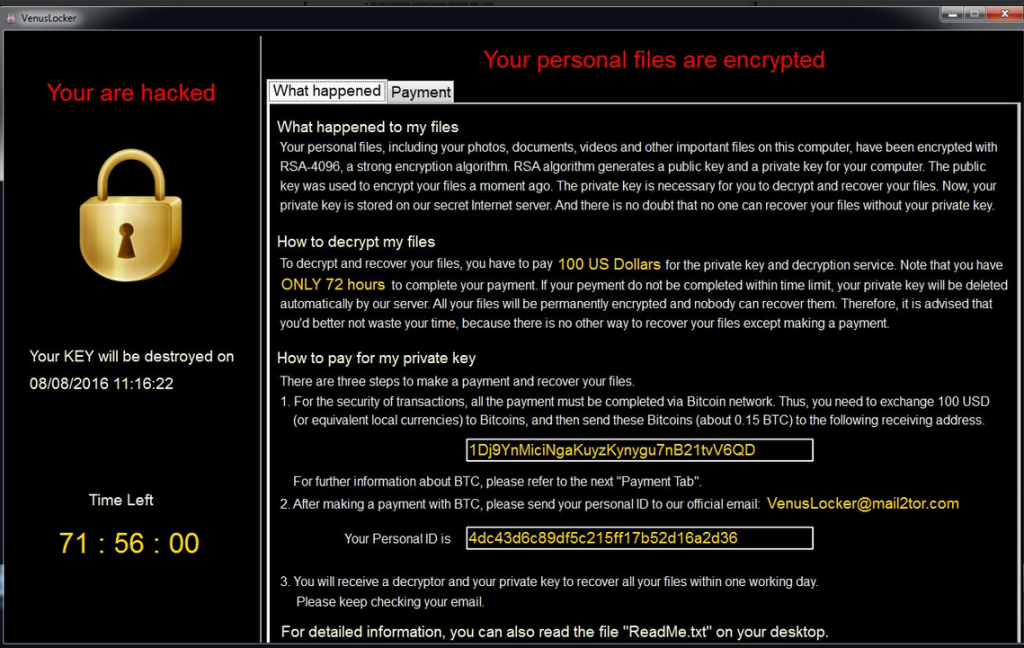
Since you might be left without your files and money, paying cyber criminals is a bad idea. What you should do instead of trying to find out how to pay them for the decryption tool is to delete Aes256 Ransomware fully from the computer. This is the step you have to take to protect your other files from being encrypted and to be able to use the computer without fear once again.
What does Aes256 Ransomware do?
Aes256 Ransomware does not ask permission to enter computers, and when users find out that it is inside the system, it is usually too late because it encrypts files the second it successfully enters the computer. Aes256 Ransomware adds the extension .aes256, so you can see which of your files have been locked and which are left as they are. You will not only find a bunch of encrypted files on your system. On top of that, you will discover a file !!! READ THIS – IMPORTANT !!!.txt. It is a document containing a ransom note. This document usually tells users what they need to do to get their files back. Unlike other ransomware infections, Aes256 Ransomware does not provide any information about the amount of money that has to be paid to get the decryptor. Instead, users are told to write an email to get the private key. Do not expect to get this key for free, so do not even bother writing an email if you are not going to spend money on it. No matter what you decide, do not forget to fully uninstall Aes256 Ransomware from your PC in order not to find new files encrypted again.
Where does Aes256 Ransomware come from?
Ransomware is one of the sneakiest types of malicious software. It silently enters computers and then starts encrypting users’ files unnoticed. When users find it, files are usually already encrypted. There are several different ways how ransomware infections are spread, but the most common way of distribution is known to be spam emails. The malicious file of the ransomware infection is spread inside these spam emails. Do not pay attention to them and definitely do not open them ever again. Also, do not forget to be more careful with applications on third-party websites.
How can I uninstall Aes256 Ransomware?
It is very important to remove Aes256 Ransomware as soon as possible because it might download additional malware and encrypt new files. Also, it is known to be able to connect to the Internet from time to time. Unfortunately, it is extremely hard to remove Aes256 Ransomware manually, so we suggest going to delete Aes256 Ransomware automatically. Use a good tool only if you wish to implement the full Aes256 Ransomware removal.
Offers
Download Removal Toolto scan for Aes256 RansomwareUse our recommended removal tool to scan for Aes256 Ransomware. Trial version of provides detection of computer threats like Aes256 Ransomware and assists in its removal for FREE. You can delete detected registry entries, files and processes yourself or purchase a full version.
More information about SpyWarrior and Uninstall Instructions. Please review SpyWarrior EULA and Privacy Policy. SpyWarrior scanner is free. If it detects a malware, purchase its full version to remove it.

WiperSoft Review Details WiperSoft (www.wipersoft.com) is a security tool that provides real-time security from potential threats. Nowadays, many users tend to download free software from the Intern ...
Download|more


Is MacKeeper a virus? MacKeeper is not a virus, nor is it a scam. While there are various opinions about the program on the Internet, a lot of the people who so notoriously hate the program have neve ...
Download|more


While the creators of MalwareBytes anti-malware have not been in this business for long time, they make up for it with their enthusiastic approach. Statistic from such websites like CNET shows that th ...
Download|more
Quick Menu
Step 1. Delete Aes256 Ransomware using Safe Mode with Networking.
Remove Aes256 Ransomware from Windows 7/Windows Vista/Windows XP
- Click on Start and select Shutdown.
- Choose Restart and click OK.

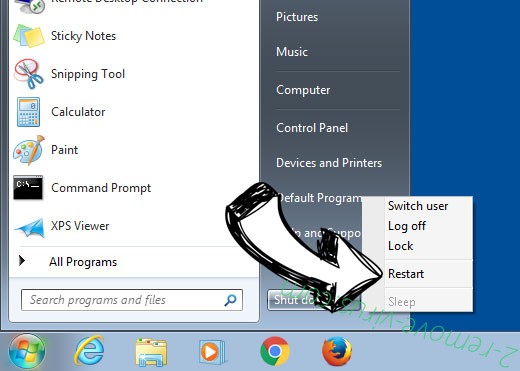
- Start tapping F8 when your PC starts loading.
- Under Advanced Boot Options, choose Safe Mode with Networking.

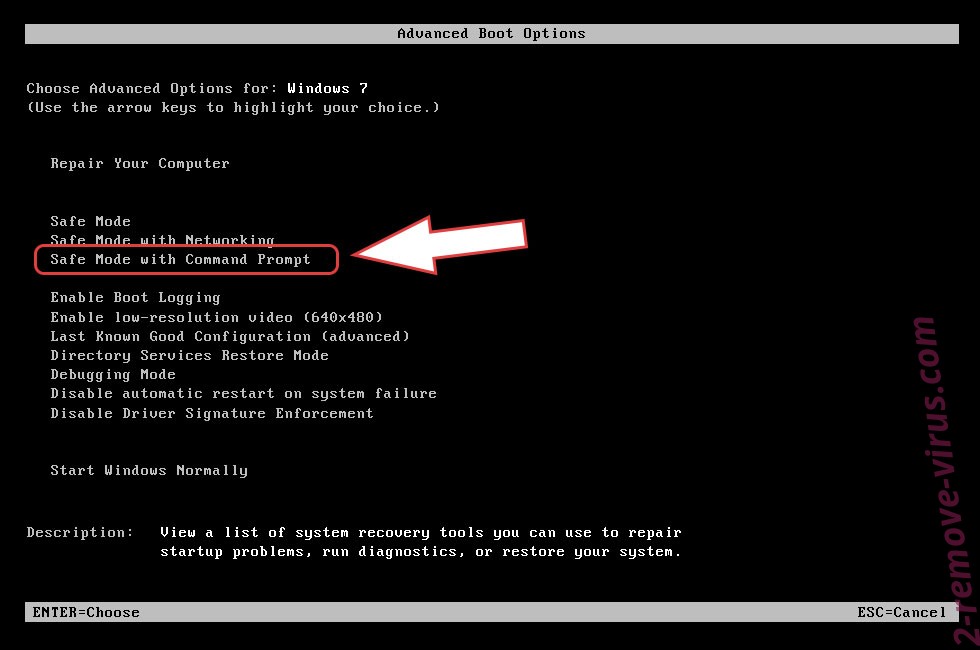
- Open your browser and download the anti-malware utility.
- Use the utility to remove Aes256 Ransomware
Remove Aes256 Ransomware from Windows 8/Windows 10
- On the Windows login screen, press the Power button.
- Tap and hold Shift and select Restart.

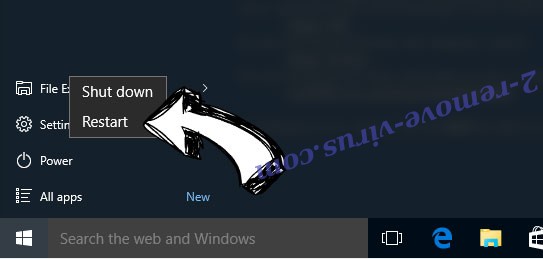
- Go to Troubleshoot → Advanced options → Start Settings.
- Choose Enable Safe Mode or Safe Mode with Networking under Startup Settings.

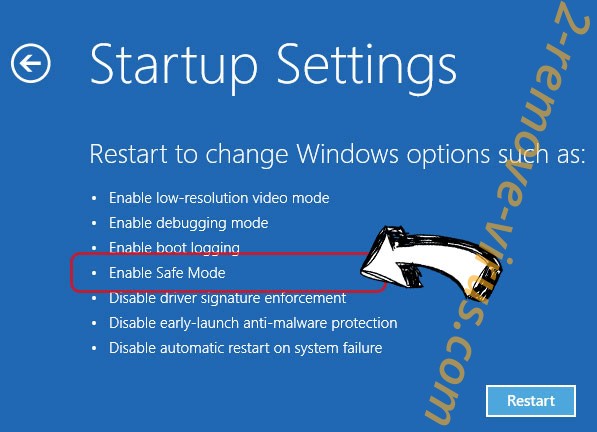
- Click Restart.
- Open your web browser and download the malware remover.
- Use the software to delete Aes256 Ransomware
Step 2. Restore Your Files using System Restore
Delete Aes256 Ransomware from Windows 7/Windows Vista/Windows XP
- Click Start and choose Shutdown.
- Select Restart and OK


- When your PC starts loading, press F8 repeatedly to open Advanced Boot Options
- Choose Command Prompt from the list.

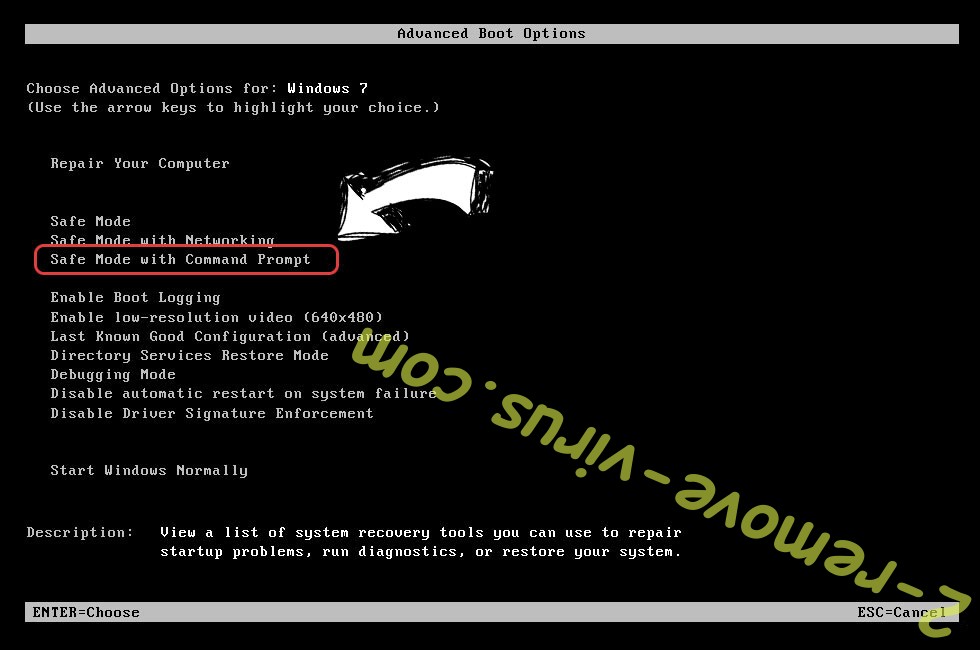
- Type in cd restore and tap Enter.

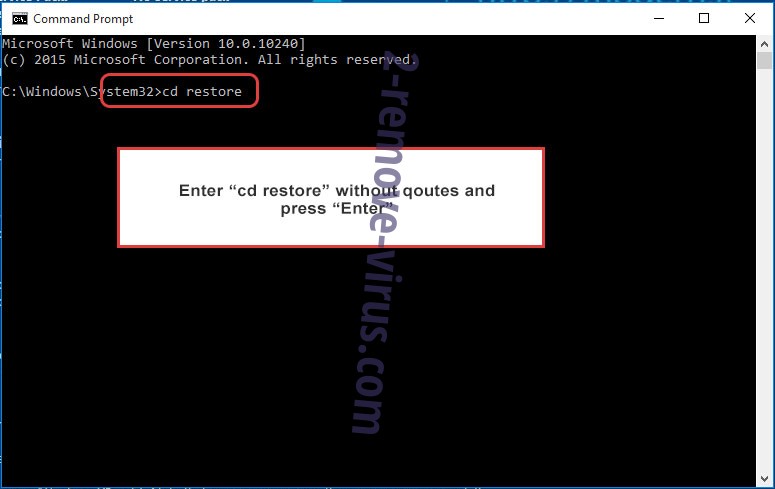
- Type in rstrui.exe and press Enter.

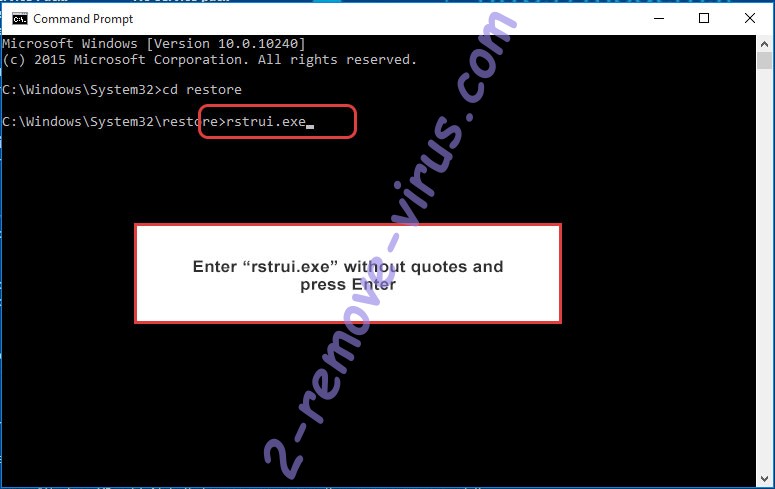
- Click Next in the new window and select the restore point prior to the infection.

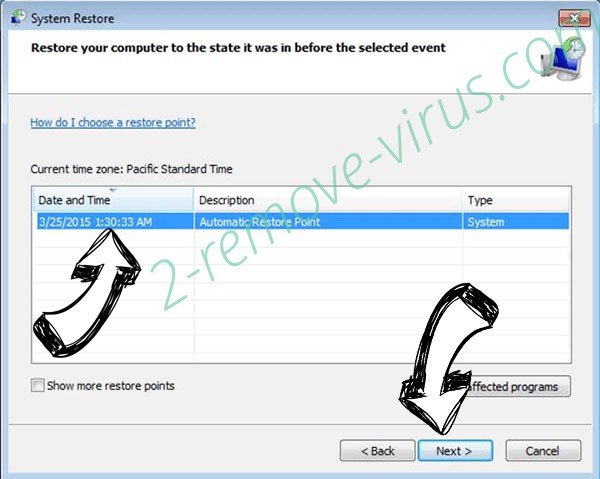
- Click Next again and click Yes to begin the system restore.

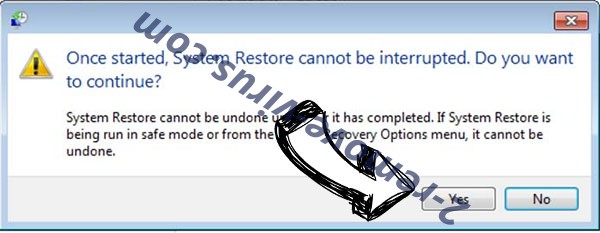
Delete Aes256 Ransomware from Windows 8/Windows 10
- Click the Power button on the Windows login screen.
- Press and hold Shift and click Restart.


- Choose Troubleshoot and go to Advanced options.
- Select Command Prompt and click Restart.

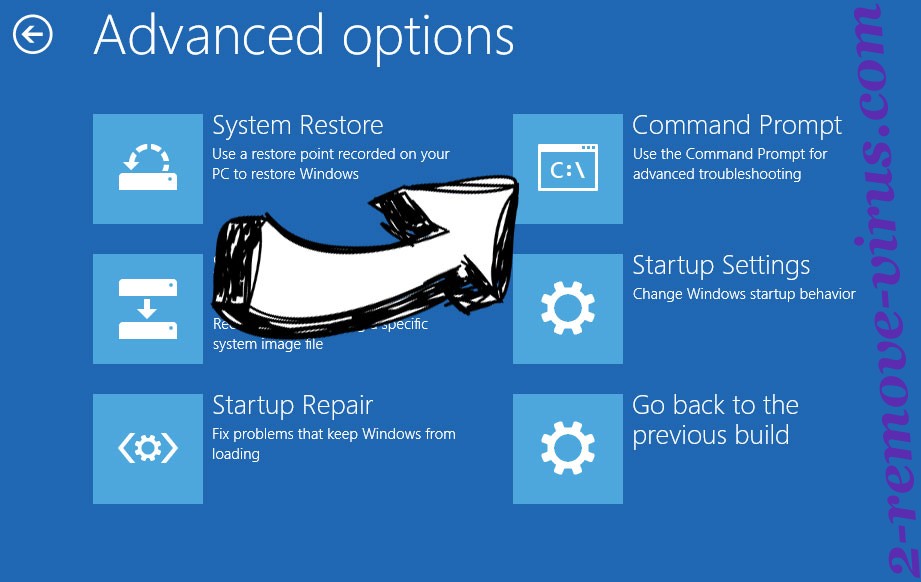
- In Command Prompt, input cd restore and tap Enter.


- Type in rstrui.exe and tap Enter again.


- Click Next in the new System Restore window.

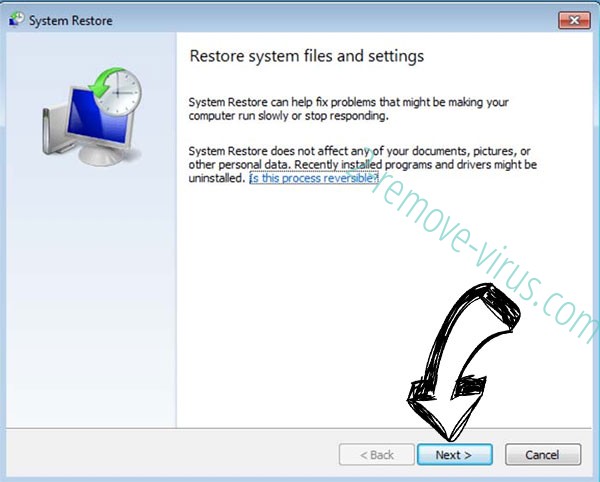
- Choose the restore point prior to the infection.


- Click Next and then click Yes to restore your system.


Site Disclaimer
2-remove-virus.com is not sponsored, owned, affiliated, or linked to malware developers or distributors that are referenced in this article. The article does not promote or endorse any type of malware. We aim at providing useful information that will help computer users to detect and eliminate the unwanted malicious programs from their computers. This can be done manually by following the instructions presented in the article or automatically by implementing the suggested anti-malware tools.
The article is only meant to be used for educational purposes. If you follow the instructions given in the article, you agree to be contracted by the disclaimer. We do not guarantee that the artcile will present you with a solution that removes the malign threats completely. Malware changes constantly, which is why, in some cases, it may be difficult to clean the computer fully by using only the manual removal instructions.
